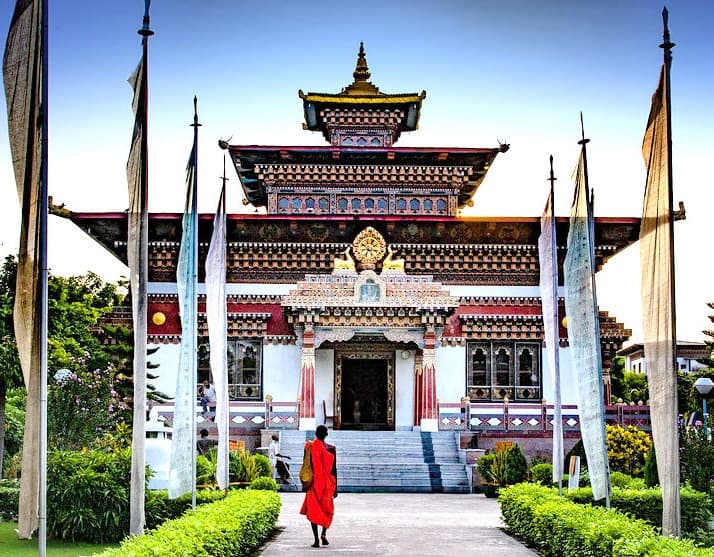Bhutan, a mystical land nestled in the Himalayas, is renowned for its spiritual ambiance and serene landscapes, making it an ideal destination for those seeking inner peace and spiritual growth. The meditation monasteries in Bhutan offer an unparalleled opportunity to immerse yourself in deep contemplation and tranquility. In this guide, we explore the top monasteries for meditation in Bhutan, where the sacred atmosphere and natural beauty combine to create the best meditation sites in Bhutan. Whether you are looking for Bhutan spiritual retreats, meditation sanctuaries in Bhutan, or simply a peaceful escape, these top Buddhist monasteries in Bhutan provide the perfect setting for spiritual meditation and mindfulness retreats.
At Druk Holidays, we pride ourselves on being the best company for exploring the top 5 meditation monasteries in Bhutan. Our deep-rooted connection with the local culture and spiritual traditions allows us to offer unparalleled experiences at these meditation sanctuaries in Bhutan. With our carefully crafted itineraries, you can immerse yourself in the serene atmosphere of the top monasteries for meditation in Bhutan, ensuring a truly transformative journey. Whether you seek the best meditation sites in Bhutan or are looking to embark on a Bhutan spiritual retreat, Druk Holidays is your trusted guide to unlocking the profound spiritual essence of this beautiful kingdom.
Paro Taktsang Monastery (Tiger’s Nest)
Perched on a sheer cliffside, 3,120 meters above sea level, Paro Taktsang Monastery, also known as the Tiger’s Nest, is one of the most iconic and sacred sites in Bhutan. This legendary monastery is a pilgrimage destination for Buddhists worldwide and offers a unique opportunity for deep spiritual practice. The breathtaking views and serene environment make it an unparalleled destination for meditation and contemplation.
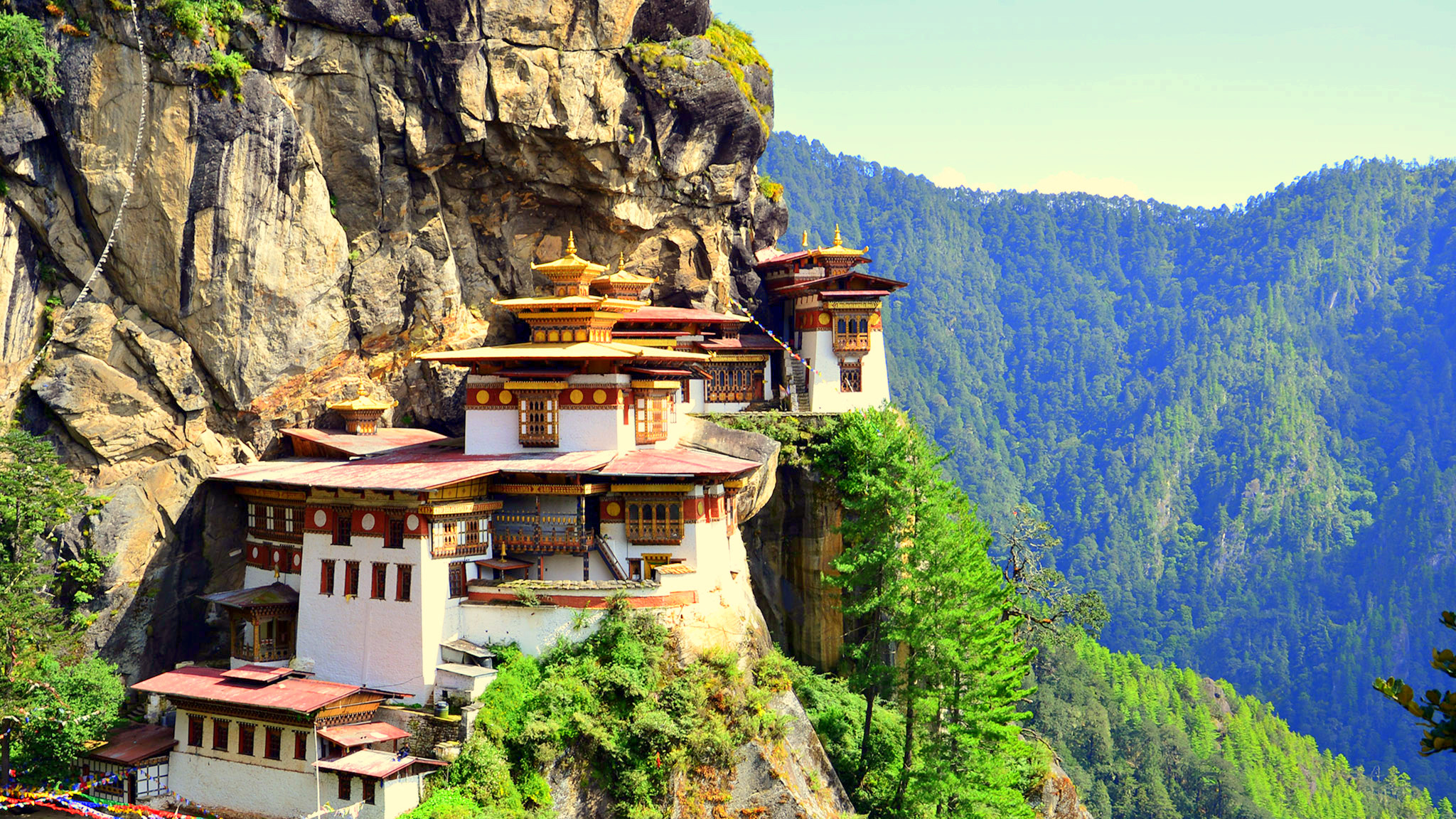
- Dramatic Cliffside Location: The monastery is built on a cliff, offering stunning views of the Paro Valley below.
- Sacred Meditation Site: Guru Rinpoche, the founder of Tibetan Buddhism, is said to have meditated here for three years, three months, three weeks, three days, and three hours.
- Challenging Yet Rewarding Hike: The journey to the monastery involves a strenuous hike through pine forests, with several viewpoints along the way.
- Peaceful Atmosphere: The serene surroundings and spiritual ambiance create a perfect environment for meditation and reflection.
- Rich Spiritual Heritage: Paro Taktsang is one of the most revered meditation monasteries in Bhutan, attracting pilgrims and meditators seeking spiritual growth.
- Stunning Architecture: The monastery’s intricate design and structure are a testament to Bhutanese craftsmanship and devotion.
- Cultural Significance: The monastery is an important symbol of Bhutan’s spiritual heritage and is deeply woven into the country’s cultural fabric.
- Panoramic Views: The journey offers panoramic views of the Paro Valley, with its lush greenery and traditional Bhutanese homes.
Paro Taktsang Monastery is not just a place of worship but a sanctuary for the soul. The combination of its dramatic location, rich history, and spiritual significance makes it a must-visit for anyone seeking a deeper connection with Bhutan’s spiritual essence. Whether you are on a pilgrimage or simply looking to experience the tranquility of one of the top Buddhist monasteries in Bhutan, the Tiger’s Nest promises an unforgettable and transformative journey.
Punakha Dzong
Punakha Dzong, known as the Palace of Great Happiness, is a majestic fortress situated at the confluence of the Pho Chhu and Mo Chhu rivers in Bhutan. This historical and architectural marvel is not only a key administrative and religious center but also an ideal location for meditation and spiritual reflection. Its serene riverside setting and rich cultural heritage make it a standout destination for those seeking tranquility and spiritual growth.
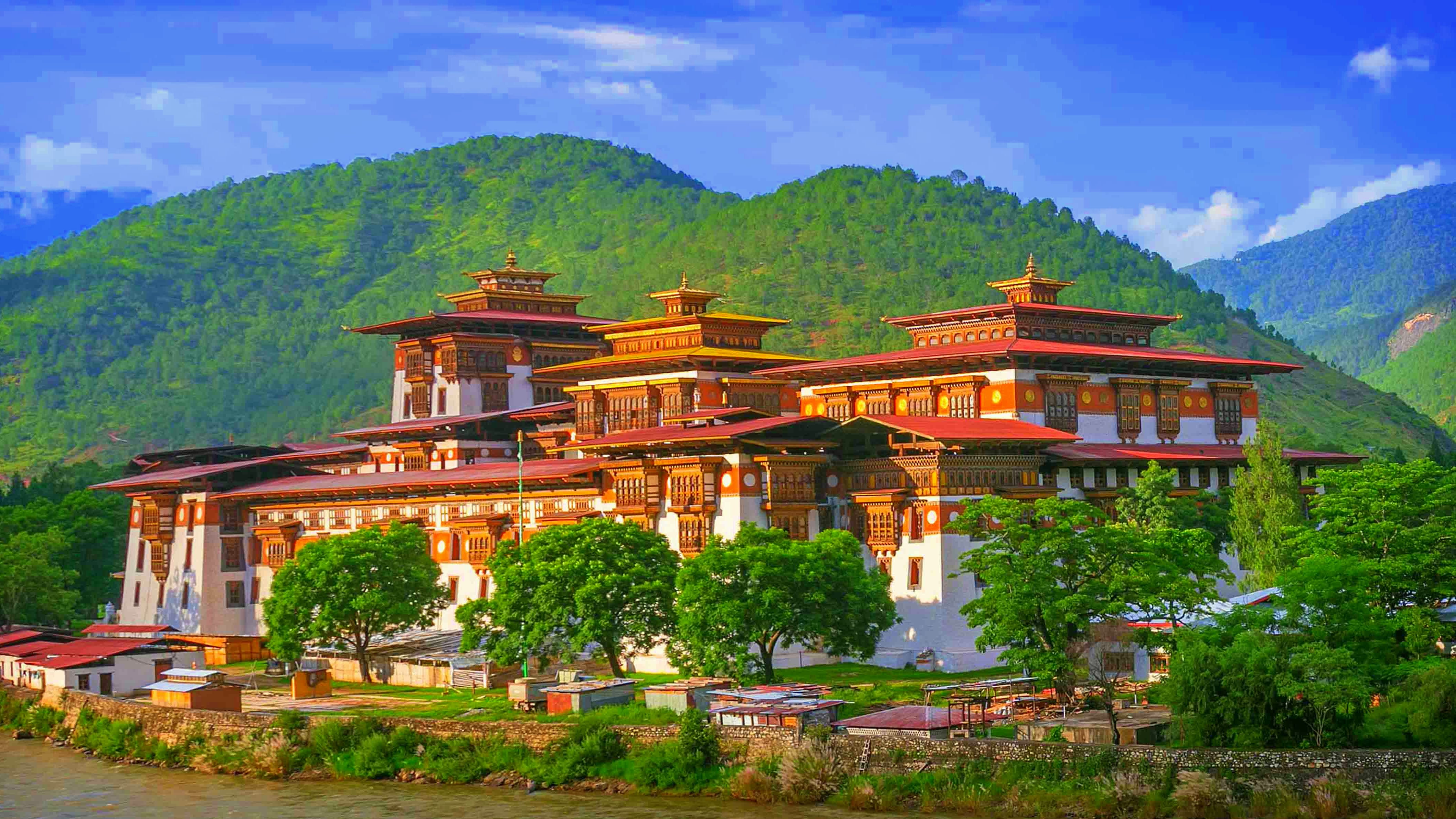
- Stunning Riverside Location: Positioned at the confluence of two rivers, the dzong offers a picturesque setting with lush greenery and flowing waters.
- Architectural Marvel: The dzong’s traditional Bhutanese architecture, with its ornate woodwork and intricate murals, showcases the country’s rich cultural heritage.
- Spiritual Atmosphere: The peaceful environment and sacred significance of the dzong make it a perfect place for meditation and mindfulness.
- Historical Significance: Punakha Dzong served as the main seat of the Bhutanese government until the capital was moved to Thimphu.
- Annual Festivals: The dzong hosts vibrant festivals like the Punakha Tshechu, where traditional dances and rituals are performed.
- Religious Importance: It houses the revered relics of the Buddha and serves as a major center for religious activities.
- Tranquil Gardens: The surrounding gardens and courtyards provide a serene space for quiet contemplation and spiritual reflection.
- Cultural Heritage: The dzong’s rich history and cultural importance make it a key symbol of Bhutan’s heritage and spiritual identity.
Punakha Dzong stands as a beacon of Bhutanese culture and spirituality, offering a serene environment for meditation and reflection. Its breathtaking location, combined with its historical and religious significance, makes it one of the most remarkable meditation monasteries in Bhutan. Whether you are drawn to its architectural beauty or its spiritual ambiance, Punakha Dzong provides an enriching experience that embodies the essence of Bhutanese heritage.
Gangtey Monastery
Gangtey Monastery is a serene haven renowned for its tranquil environment and spiritual significance. Often regarded as one of the top monasteries for meditation in Bhutan, it offers a unique opportunity for those seeking a peaceful retreat amidst nature. The monastery’s location, surrounded by rolling hills and the famous Black-Necked Cranes, enhances its reputation as a prime spiritual practice and reflection destination.
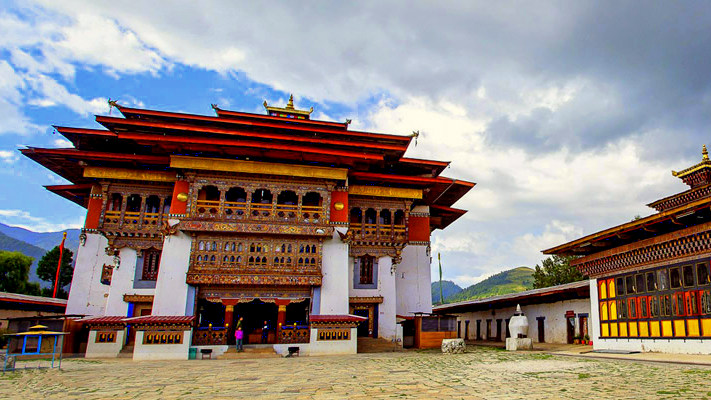
- Scenic Location: Located in the Phobjikha Valley, the monastery is surrounded by beautiful landscapes, including lush meadows and rolling hills.
- Black-Necked Cranes: The area is known for its annual winter visitor, the Black-Necked Crane, adding to the valley’s serene and magical atmosphere.
- Traditional Architecture: The monastery features traditional Bhutanese architecture, with intricately painted interiors and ornate carvings.
- Peaceful Retreat: The tranquil setting provides an ideal environment for meditation, mindfulness, and spiritual reflection.
- Cultural Significance: Gangtey Monastery is one of the most important Nyingma monasteries in Bhutan, holding a special place in the country's spiritual landscape.
- Annual Festivals: The monastery hosts the Gangtey Tsechu, a vibrant festival featuring traditional dances and ceremonies.
- Community Center: The monastery serves as a cultural and educational center for the local community, offering teachings and support.
- Nature Integration: The monastery’s integration with the natural surroundings fosters a deep sense of peace and connection with the environment.
Gangtey Monastery stands as a beacon of tranquility and spiritual richness in Bhutan. Its serene location in the Phobjikha Valley, combined with its cultural and spiritual significance, makes it a premier destination for those seeking a meditation retreat in Bhutan. Whether you are drawn to its peaceful ambiance or the stunning natural beauty, Gangtey Monastery offers a profound and rejuvenating experience for all visitors.
Tango Monastery
Tango Monastery is a hidden gem for those seeking spiritual depth and tranquility. Renowned for its significant role in Bhutanese Buddhism and its serene setting amidst dense forests, Tango Monastery is one of the top meditation spots in Bhutan. It offers a unique blend of spiritual learning and natural beauty, making it an ideal destination for meditation and reflection.
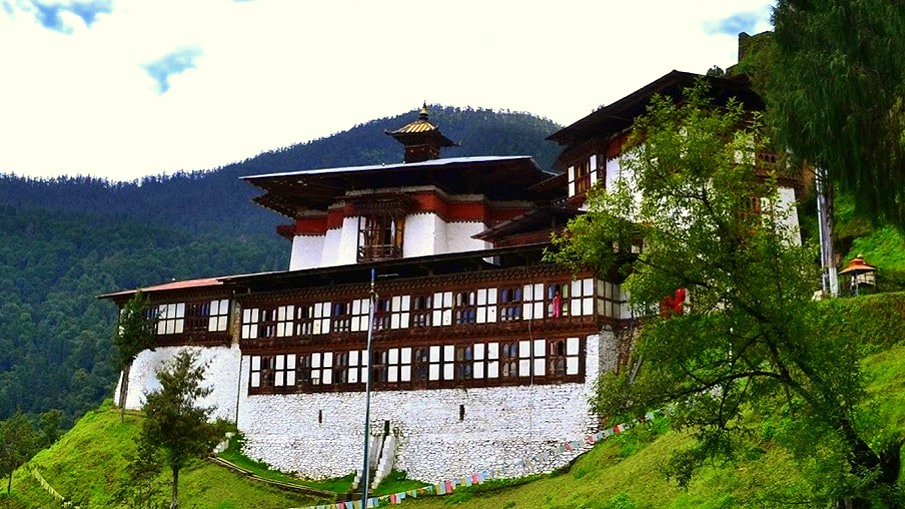
- Accessible Location: A scenic hike from Thimphu leads to the monastery, offering beautiful views of the surrounding landscape along the way.
- Significant Buddhist Center: The monastery is an important center for Buddhist learning, particularly in the Drukpa Kagyu tradition.
- Peaceful Setting: Surrounded by lush forests and mountains, the monastery provides a serene environment perfect for meditation and contemplation.
- Architectural Beauty: Tango Monastery features traditional Bhutanese architecture, with intricate designs and vibrant murals that reflect its spiritual heritage.
- Educational Role: It serves as a training center for monks, providing teachings and guidance in Buddhist philosophy and practice.
- Historical Significance: Founded in the 12th century by the famous Tibetan saint Phajo Drugom Zhigpo, the monastery has a rich history and spiritual legacy.
- Scenic Hiking Trails: The hike to Tango Monastery offers stunning views of the Thimphu Valley and surrounding forests, adding to the overall experience.
- Tranquil Ambiance: The peaceful and isolated location fosters a deep sense of inner calm and is ideal for those seeking a mindfulness retreat.
Tango Monastery is a sanctuary of peace and spiritual growth, offering a perfect blend of natural beauty and Buddhist tradition. Its serene location, combined with its role as a major Buddhist learning center, makes it one of the premier meditation monasteries in Bhutan. Whether you are on a journey for spiritual meditation or simply seeking a retreat from everyday life, Tango Monastery provides an enriching and tranquil experience.
Chimi Lhakhang
Chimi Lhakhang, also known as the Temple of Fertility, is a revered site in Bhutanese spirituality. Known for its unique focus on fertility and its vibrant, welcoming atmosphere, this monastery offers a distinctive and serene environment for meditation and reflection. It stands out among the top meditation spots in Bhutan for those seeking a blend of spiritual significance and cultural richness.

- Fertility Focus: Chimi Lhakhang is renowned for its association with fertility blessings, making it a popular destination for those seeking spiritual and personal growth.
- Charming Location: Set amidst lush fields in the Punakha Valley, the monastery provides a tranquil setting that enhances meditation and contemplation.
- Traditional Architecture: The monastery features traditional Bhutanese design with colorful murals and intricate woodwork, reflecting the country's rich cultural heritage.
- Cultural Significance: Built in the 15th century by Lama Drukpa Kunley, also known as the Divine Madman, it is a significant site for followers of his unconventional teachings.
- Annual Festivals: The monastery hosts annual celebrations, including the colorful and lively Phallus Festival, which attracts visitors from across Bhutan and beyond.
- Spiritual Ambiance: The peaceful and spiritually charged atmosphere of Chimi Lhakhang makes it an ideal place for spiritual meditation in Bhutan.
- Scenic Approach: The approach to the monastery is through picturesque rural landscapes, adding to the overall serene experience.
- Welcoming Environment: The monastery is known for its warm and friendly atmosphere, welcoming visitors and devotees with open arms.
Chimi Lhakhang offers a unique and spiritually enriching experience in the heart of Bhutan's Punakha Valley. Its focus on fertility, combined with its serene location and vibrant cultural traditions, makes it one of the most distinctive meditation monasteries in Bhutan. Whether you are drawn to its spiritual practices or its beautiful setting, Chimi Lhakhang provides a memorable retreat that embodies the essence of Bhutanese spirituality and culture.
The top 5 meditation monasteries in Bhutan each offer a unique gateway to inner peace and spiritual enrichment, reflecting the profound spiritual heritage of this Himalayan kingdom. From the breathtaking heights of Paro Taktsang Monastery to the serene riverside setting of Punakha Dzong, these sacred sites provide unparalleled environments for meditation and reflection. Gangtey Monastery and its tranquil valley setting, the secluded beauty of Tango Monastery, and the culturally vibrant Chimi Lhakhang each offer distinctive experiences for those seeking spiritual growth. Whether you are pursuing a mindfulness retreat, exploring Bhutan spiritual retreats, or simply seeking a deeper connection with yourself and nature, these monasteries serve as ideal destinations. Immersing yourself in the peaceful ambiance and rich traditions of these meditation sanctuaries in Bhutan ensures a transformative journey that resonates with the soul and enriches the spirit.
FAQs of Top 5 Meditation Monasteries in Bhutan
Q: What is the best time to visit the meditation monasteries in Bhutan?
A: The best time to visit the meditation monasteries in Bhutan is during the spring (March to May) and autumn (September to November) seasons. During these times, the weather is pleasant, and the natural beauty is at its peak. Avoid the monsoon season (June to August) and the winter months (December to February) as travel conditions may be challenging and some monasteries may be less accessible.
Q: Do I need a special permit to visit these monasteries?
A: Most of the top monasteries for meditation in Bhutan require a visa, which is typically arranged by your travel agency. While visiting specific sites such as Paro Taktsang Monastery and Punakha Dzong, local permits are generally not required, but it's advisable to check with your tour operator for any specific requirements.
Q: Are there accommodations available near these monasteries?
A: Yes, accommodations are available near the meditation sanctuaries in Bhutan. From luxury hotels and guesthouses to traditional Bhutanese lodges, options vary depending on the location. Many visitors choose to stay in nearby towns like Paro, Thimphu, and Punakha for convenience and easy access to the monasteries.
Q: What should I wear when visiting the monasteries?
A: When visiting the top Buddhist monasteries in Bhutan, it is important to dress modestly and respectfully. Wear comfortable, conservative clothing covering your shoulders and knees. It is also customary to remove your shoes before entering the monastery and to avoid wearing hats or sunglasses inside.
Q: Are the monasteries accessible for people with limited mobility?
A: Accessibility varies by monastery. Paro Taktsang Monastery, for example, requires a challenging hike, which may not be suitable for those with limited mobility. Other monasteries like Punakha Dzong and Chimi Lhakhang are more accessible, but it’s advisable to check with your tour operator regarding specific accessibility options.
Q: Can I participate in meditation sessions or spiritual activities at these monasteries?
A: Yes, many monasteries offer opportunities to participate in meditation sessions and spiritual activities. Gangtey Monastery and Tango Monastery are known for their educational and meditation programs. It is recommended to inquire in advance with your tour operator or directly with the monasteries to arrange participation in such activities.
Q: Are there any cultural or spiritual etiquette I should be aware of?
A: Yes, it's important to observe local cultural and spiritual etiquette. Always show respect to monks and religious symbols. When walking around monasteries, it’s customary to walk clockwise and to avoid pointing your feet at sacred objects. Silence and reverence are appreciated in meditation areas.
Q: How long should I plan to spend at each monastery?
A: The time spent at each monastery can vary based on your interests and schedule. Generally, visiting Paro Taktsang Monastery may take around half a day, while Punakha Dzong and Chimi Lhakhang can be explored in 1 to 2 hours each. Gangtey Monastery and Tango Monastery may require half a day or more depending on hiking and exploration time.


